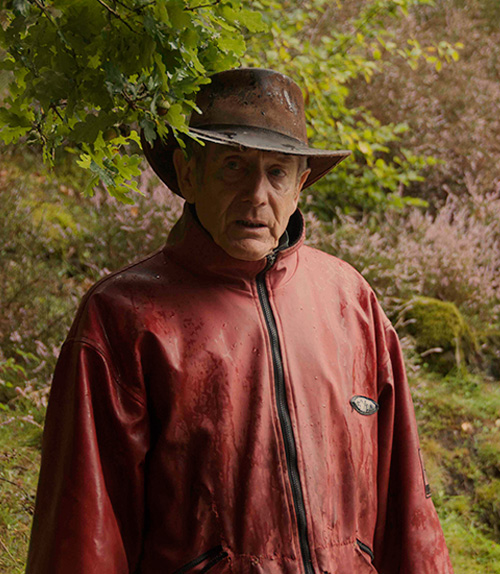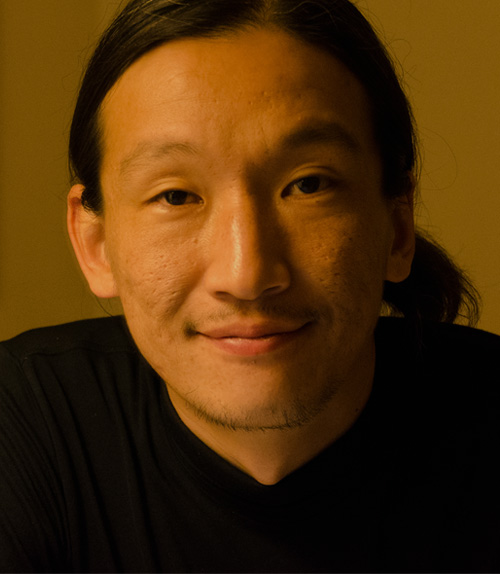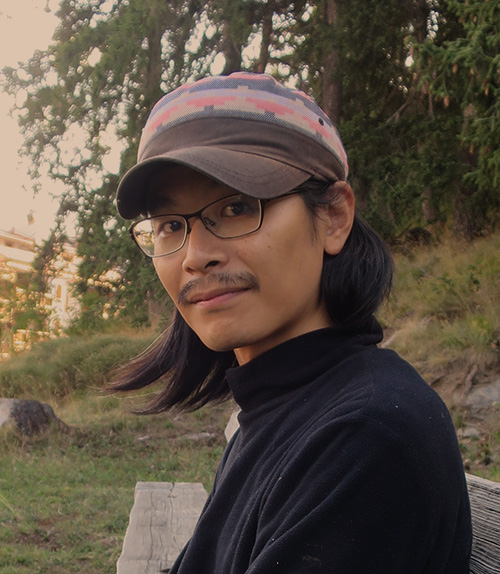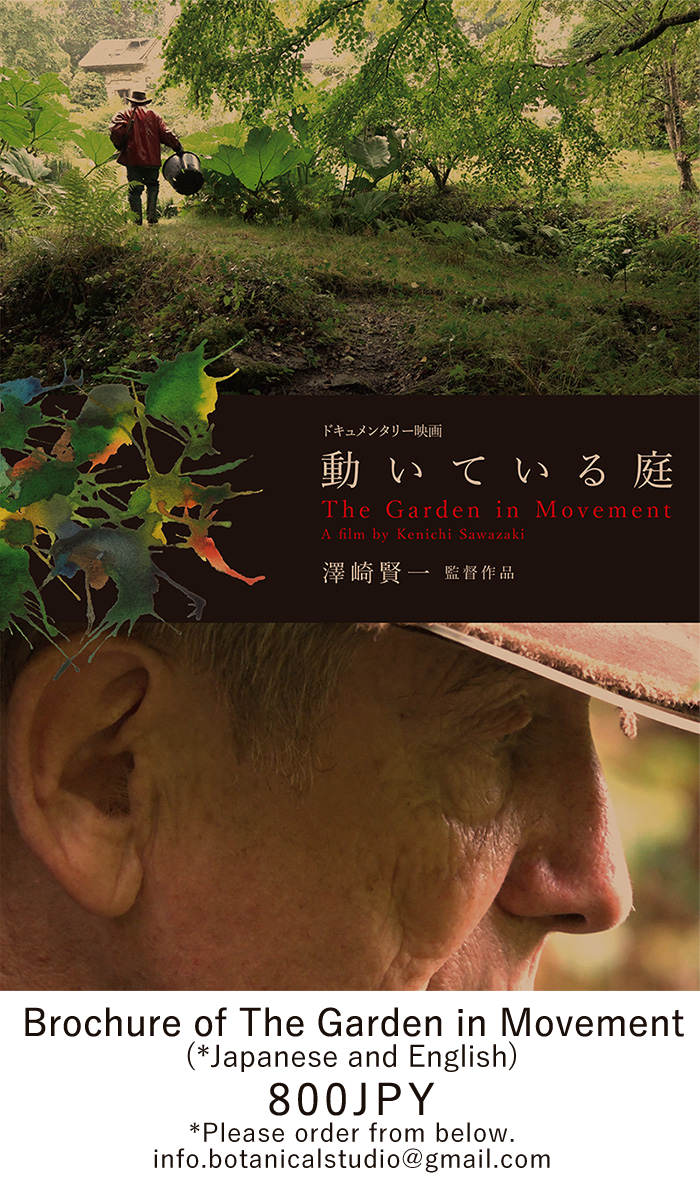

Introduction
“This planet can be thought of as a garden.” This was the key concept of Planetary Garden, an exhibition in Paris by the French gardener Gilles Clément that captivated 300,000 visitors. Known for being the creator of the André Citroën Park and Quai Branly Museum Garden, the philosophy that informs his creations are also in the spotlight.Clément visited Japan for the first time in the winter of 2015 for a lecture series at the Research Institute for Humanity and Nature. This series was split into three parts, each of which focused on his three central concepts: The Garden in Movement, The Planetary Garden and The Third Landscape.
For example, looking at The Garden in Movement, grass and trees are caused to move with the transformations of nature, bringing about the formation of a garden through the dynamism of change. Is this nature or culture? Considered as something attached closely to nature, as shaped, as continuously changing, the garden encourages us to reconsider the conventional, bisectional distinction that separates nature and culture.
In his exploration of Japan, Clément is guided by Tomoki Yamauchi, who translated his book The Garden in Movement into Japanese, and Emmanuel Marès, a researcher in history of Japanese gardens. With Tomoki and Emmanuel, Clément visits Japan's gardens and deepens his relations with Japan's gardeners. What will he find in Japanese nature and culture?
The origins of The Garden in Movement can be found in Clément's own garden. Walking through an expansive garden facing the Creuse River, Clément shows us to places he has labeled 'Valley Garden' or 'The Meadow.' While it is of course a richly varied garden, we can also learn much from how he lives his life; solar panels on his self-built house to save energy, meals of vegetables harvested from his own field. Everything has started from this place.
To do as much as possible with, as little as possible against. this is Clément's fundamental approach as a gardener. Respecting this creed, this ethnographic film records Clément in long shot as he tours Japan and shows us his own garden. Recording Clément's behavior in a long take, the cinematographer becomes the camera and through this synchronizes breath with the camera's object, prompting Clément's being to come in possession of a new, shining brilliance.
Translated from Japanese by Daniel Milne
Message from Gilles Clément
Message from Director

Cast
 Gilles Clément
Gilles ClémentBorn in 1943. Gardener, landscape designer, botanist, writer... Gilles Clément is a man of many faces. Connoisseur of plants, animals and all the living being in general, he discovered a new species of butterfly in Cameroun (Bunaeopsis clementi). His way of thinking the garden, respecting the biodiversity and the mouvement of plants is totally new and unique. His main works: André Citroën Park in Paris (1986-94), Henri Matisse Park in Lille (1990-95), Domaine du Rayol in Rayol-Canadel-sur-Mer (1989-1994), The Garden of the Musée du Quai Branly (2005), etc. His main books: Le jardin en mouvement (1991), Le jardin planétaire (1999), Manifeste du tiers-paysage (2004), Thomas et le Voyageur (1997), etc.
 Tomoki Yamauchi
Tomoki YamauchiBorn in 1978. Lecturer of Kyoto University of Education/ Gardener. He is carrying out research about the way of thinking and practice contemporary European garden and landscape architecture through the analysis of modern garden history. His main works: ‘Deer and Children Garden’ (Otsu, 2013-14) and ‘Eight Herbs Garden’ (Kyoto, 2012-16) and exhibitions: ‘Micro Landscape in Movement’ (Yebisu International Festival for Art and Alternative Visions, 2016). He translated Gilles Clément's Le jardin en mouvement (MISUZU shobo, 2015) into Japanese.
 Emmanuel Marès
Emmanuel MarèsBorn in 1978. Ph.D in Japanese architecture history. Associate fellow at the Nara National Institute for Cultural Properties, he is currently pursuing his researchs in history of Japanese gardens. Working also for the development of French-Japanese cultural exchanges, he organised Gilles Clément’s visit to Japan in February 2015. As an editor, he published The Great Masters of Gardens of Kyoto, a series of bilingual books (Japanese/English). Co-author of the Vocabulaire de la spatialité japonaise, CNRS éditions (French Architecture Academy Award).
Staff
Directed, photographed, edited and produced by :
Kenichi Sawazaki
Production and subtitles : Emmanuel Marès
Colorist : Masae Kariya
Assistant camera : Yushi Yanohara
Sound mixing : Masaya Kuranuki
Adviser : Tomoki Yamauchi
Flyer/Catalog Design : Shinichi Wade
Kenichi Sawazaki
Production and subtitles : Emmanuel Marès
Colorist : Masae Kariya
Assistant camera : Yushi Yanohara
Sound mixing : Masaya Kuranuki
Adviser : Tomoki Yamauchi
Flyer/Catalog Design : Shinichi Wade
THANKS :
Shinichi Iwamura, Junko Ogawa, Tôru Shinohara, Sylvie Brosseau,
Sachiyo Takeshima, Michio Tase, Masahiro Terada, Nadège Sellier,
Machiko Furukawa, Mitsumori Furukawa, Shin Muramatsu,
Masaki Yoshioka
Maison Franco-Japonaise Bureau français
Institut français du Japon Kansai-Kyoto
Konchi-in Temple
Murin-an
Sonoda's residence "Garden for deers and children"
Co-produced by :


Shinichi Iwamura, Junko Ogawa, Tôru Shinohara, Sylvie Brosseau,
Sachiyo Takeshima, Michio Tase, Masahiro Terada, Nadège Sellier,
Machiko Furukawa, Mitsumori Furukawa, Shin Muramatsu,
Masaki Yoshioka
Maison Franco-Japonaise Bureau français
Institut français du Japon Kansai-Kyoto
Konchi-in Temple
Murin-an
Sonoda's residence "Garden for deers and children"
Co-produced by :

About Director
 Kenichi Sawazaki
Kenichi SawazakiBorn in 1978. He is a Japanese contemporary artist and a film director. Released from the bonds of intellectualized and stereotyped relations, he produces video works and films that beckon a more direct and mutual relationship with the world. For his latest film project, he has been working closely in recent years with researchers and experts to document the diverse natural cultures of countries around the world. His first long-form documentary film The Garden in Movement received its inaugural public screening in Yebisu International Festival for Art & Alternative Visions 2016. Major exhibitions include: Solo show "Linguistic Montage"(MAXXX - Project Space, Sierre, Switzerland, 2015), "Domestic Archaeology"(GALLERY TERRA TOKYO, Tokyo, 2013) etc.

Theater
| 29-30 September, 2017 | Lieux Mouvants |
|---|---|
| 24 June - 7 September, 2017 |
The Seventh Art Theater |
| 10-30 June, 2017 | Rissei Cinema Project |
| 17 September 14:00-, 2016 |
Institut français du Japon Kansai-Kyoto *There is a talk event with Sawazaki(Director) and Marès(Production) after the screening Moderator : Yutaka Mimura(Research Institute for Humanity and Nature) |
| 16 September 18:00-, 2016 | Institut français du Japon Kansai-Kyoto |
| 16 February 15:00-, 2016 | YEBISU GARDEN CINEMA (Yebisu International Festival for Art & Alternative Visions 2016) |
| 15 February 18:30-, 2016 | YEBISU GARDEN CINEMA (Yebisu International Festival for Art & Alternative Visions 2016) |
| 13 February 11:30-, 2016 | YEBISU GARDEN CINEMA (Yebisu International Festival for Art & Alternative Visions 2016) |

Links
Gilles Clément's Website
*French only
*French only
MISUZU Shobo, Ltd.
*Japanese only
*Japanese only
Gilles Clément, Le Jardin en Mouvement
*French only
*French only
Cast : Gilles Clément, Emmanuel Marès, Tomoki Yamauchi
Directed, photographed, edited and produced by : Kenichi Sawazaki
Production and subtitles : Emmanuel Marès | Colorist : Masae Kariya | Assistant camera : Yushi Yanohara | Sound mixing : Masaya Kuranuki
Adviser : Tomoki Yamauchi | Flyer/Catalog Design : Shinichi Wade
Co-produced by : Research Institute for Humanity and Nature, MISUZU Shobo, Ltd.
※1 Gilles Clément, Le Jardin en Mouvement, Sens & Tonka, 2007/2008
Translated from french by Emmanuel Marès
2016 / France-Japan / 85 minutes / HD / French, English, Japanese
Contact : info.botanicalstudio@gmail.com
Directed, photographed, edited and produced by : Kenichi Sawazaki
Production and subtitles : Emmanuel Marès | Colorist : Masae Kariya | Assistant camera : Yushi Yanohara | Sound mixing : Masaya Kuranuki
Adviser : Tomoki Yamauchi | Flyer/Catalog Design : Shinichi Wade
Co-produced by : Research Institute for Humanity and Nature, MISUZU Shobo, Ltd.
※1 Gilles Clément, Le Jardin en Mouvement, Sens & Tonka, 2007/2008
Translated from french by Emmanuel Marès
2016 / France-Japan / 85 minutes / HD / French, English, Japanese
Contact : info.botanicalstudio@gmail.com
